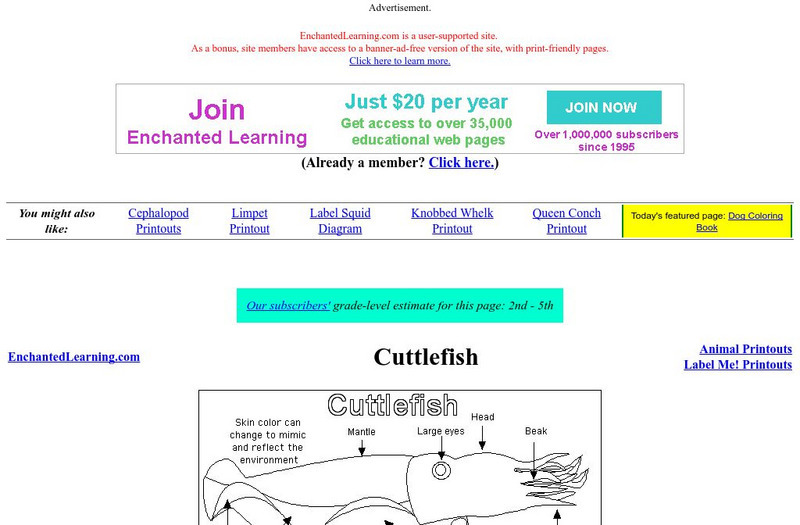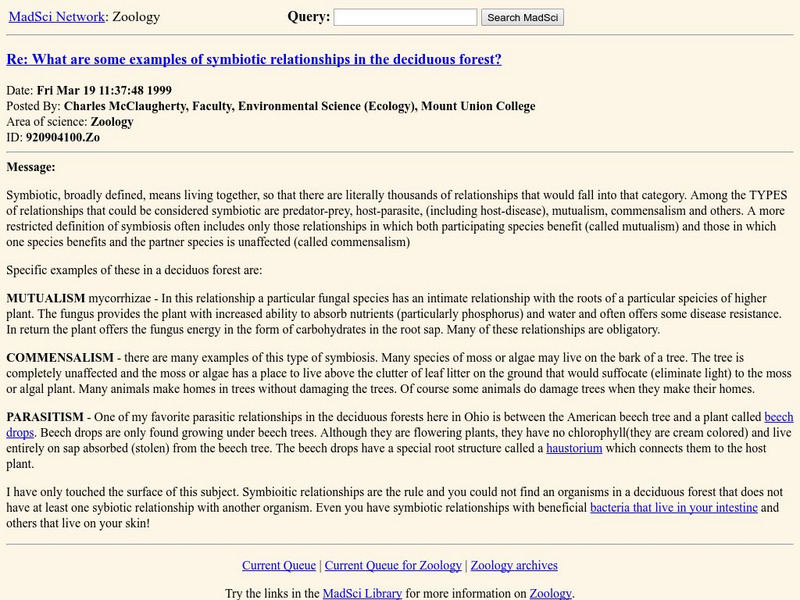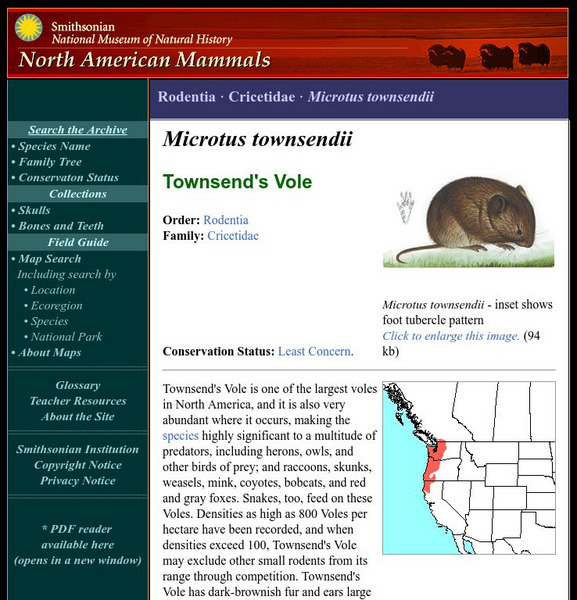Alabama Learning Exchange
Alex: Nocturnal Animals Lesson #4: Owls
During this lesson, students will visit various Internet sites to learn facts about owls. They will use this information to draw a picture of the owl food chain, dissect owl pellets, and write a poem about owls.
PBS
Pbs Teachers:yellowstone: Yellowstone Food Web
Investigate the interdependence of wildlife in the Yellowstone ecosystem and draw an ecosystem showing the interdependence of life forms.
Science Buddies
Science Buddies: Now You See It, Now You Don't! Test Your Peripheral Vision
The survival of our ancient ancestors depended on their ability to use peripheral vision to find prey and to avoid predators. Almost everything we do-from riding a bike, to dribbling a basketball, to reading a book-depends on peripheral...
PBS
Pbs Teachers:mammals of Namib: Who's in Charge?
Identify mammals of the Namib Desert, categorize which are predators and which are prey and discuss the balance of nature in Namib.
The Association of the British Pharmaceutical Industry
Abpi: Population Growth
Students control the environments in four different scenarios to discover how any changes might affect populations. The different simulations include microorganisms, rabbits, foxes, and other organisms.
Biology Corner
Biology Corner: Peppered Moths Simulation
This simulation allows students to take on the role of a bird and eat different types of peppered moths. Students analyze which types of peppered moths do better in various environments.
San Diego Zoo Global
San Diego Zoo: Alligators & Crocodiles
This resource provides detailed facts about alligators and crocodils, including how to distinguish between a crocodile and an alligator, information on their eating habits, how a mama crocodile protects her young, and more. There are...
ArtsNow
Arts Now Learning: Magic Rocks [Pdf]
In this lesson, students work in groups with each acting as a predator, prey, or family member in a particular habitat. They present their habitat performance to the class and students identify the habitat and animal relationships. Then,...
TeachEngineering
Teach Engineering: Biodomes
Students explore the biosphere's environments and ecosystems, learning along the way about the plants, animals, resources and natural cycles of our planet. Over the course of lessons 2-6, students use their growing understanding of...
PBS
Pbs Learning Media: Shark Attack! The Hunt
This interactive module from the NOVA: "Shark Attack!" web site details the six senses that sharks use to find and capture their prey.
BSCS Science Learning
Bscs: Frog Eat Frog World
Using maps and graphs of large data sets collected in FrogWatch, students will determine the range, preferred land cover, and proximity to water of the American bullfrog to figure out the bullfrog's requirements for food, water, and...
Other
International Wolf Center: Fun Wolf Facts
A concise site that features "Just the Facts" about wolves. Information such as average length, height, weight, length of life, etc. is shared in this site.
Science Struck
Science Struck: A Bird's Eye View of the Desert Food Chain
Describes how a food chain works in a desert and how the Mojave desert food chain works in particular.
University of Arizona
Univ. Of Az: Spiders: An Organism for Teaching Biology
Students capture spiders and then conduct various experiments to identify their spider, analyze its feeding rate, and discover its effect on populations of insects. Includes directions for student activities and teaching tips.
Other
Explore Learning: Food Chain Gizmo
In this ecosystem consisting of hawks, snakes, rabbits and grass, the population of each species can be studied as part of a food chain. Disease can be introduced for any species, and the number of animals can be increased or decreased...
Other
Biology at Shaw High School: What Do Living Things Need to Survive?
Discusses the interrelatedness of all living things and of ecosystems and biomes, and what organisms need to survive and to maximize the carrying capacity of an ecosystem. This explanation is followed by a series of activities including...
Enchanted Learning
Enchanted Learning: Cuttlefish
Explore the world of the cuttlefish, a unique cephalopod. Students will gain a greater understanding of this mollusk through fun facts, information on the anatomy, diet, predators and more at this site.
Other
Bioinsight: Wolf Scats a Precious Tool for Biologists
Just from wolf scat, it's possible for biologists to know if a species occurs in the area, what the animals are eating, if they are healthy, if reproduction is occurring, if the scat is from a male or a female and even the minimum number...
Science Education Resource Center at Carleton College
Serc: Food Chains: Nature's Restaurant
Young scholars begin this lesson by making observations and recording evidence of the variety of living things in local nature site. Students use reference materials to research predators and food of the animals they observed, then...
Australian Museum
Australian Museum: Dinosaurs on the Attack
Scientists have theropods overcame their prey using their claws and teeth are described.
MadSci Network
Symbiotic Relationships in the Deciduous Forest
A brief definition of symbiotic, followed by explanations of mutualism, commensalism, and parasitism.
Science Struck
Science Struck: Symbiotic Relationships in the Deciduous Forest
Explains what a symbiotic relationship is, the five main types of symbiosis, and provides examples of symbiotic relationships among living things in a deciduous forest.
PBS
Nh Pbs: Nature Works: Bony Fish
This site identifies different characteristics and information related to Bony Fish. Find out some fun facts about these friendly fish when you explore this site.
Smithsonian Institution
National Museum of Natural History: American Mammals: Townsend's Vole
Townsend's Vole is one of the largest voles in North America, and it is also very abundant where it occurs, making the species highly significant to a multitude of predators, including herons, owls, and other birds of prey; and raccoons,...
Other popular searches
- Predators and Prey
- Mollusks Prey and Predators
- Predators and Prey Reptiles
- African Predators and Prey
- Predators and Prey Africa
- Predators and Prey Oceans














